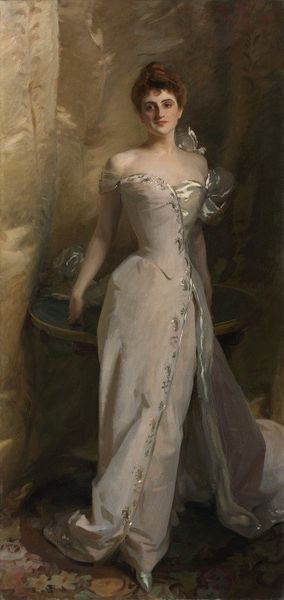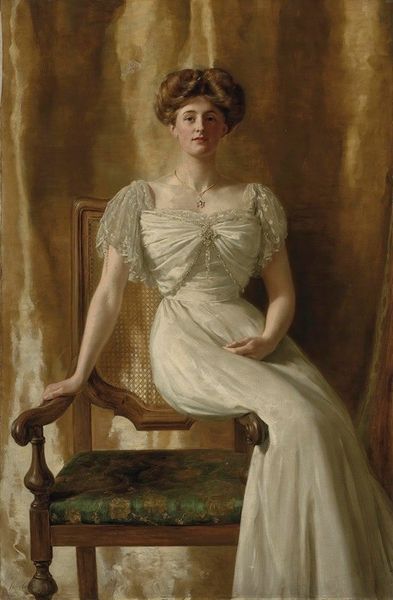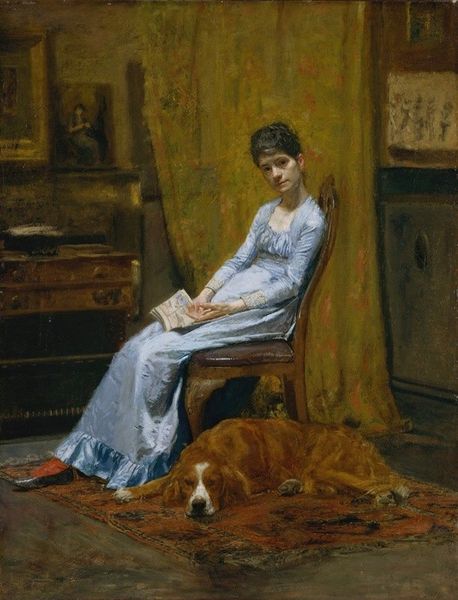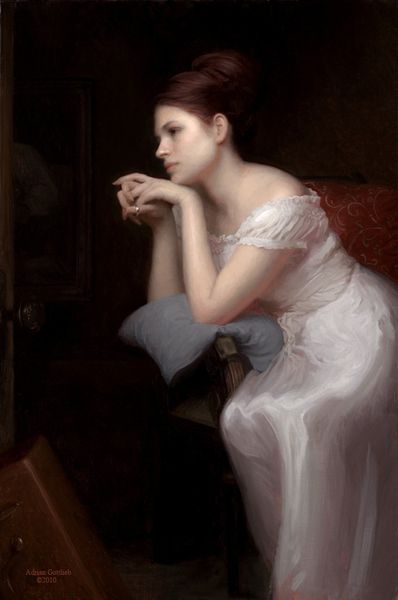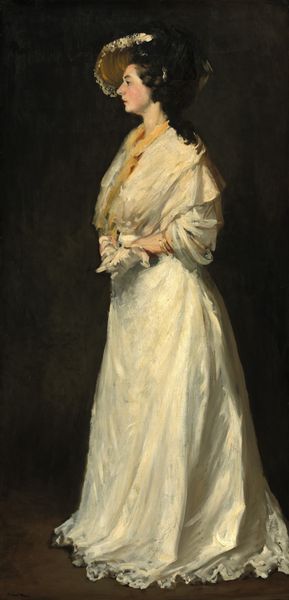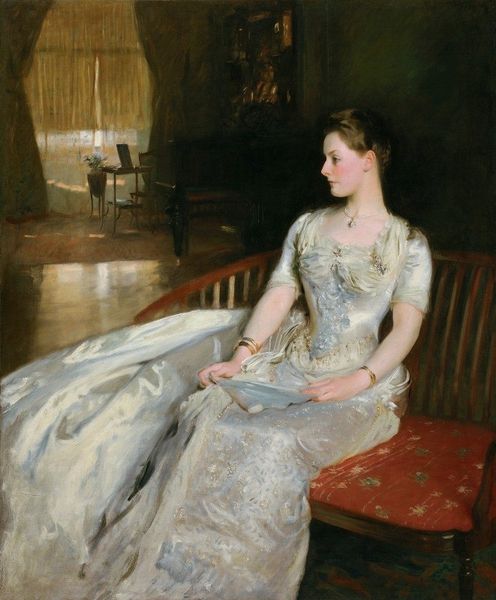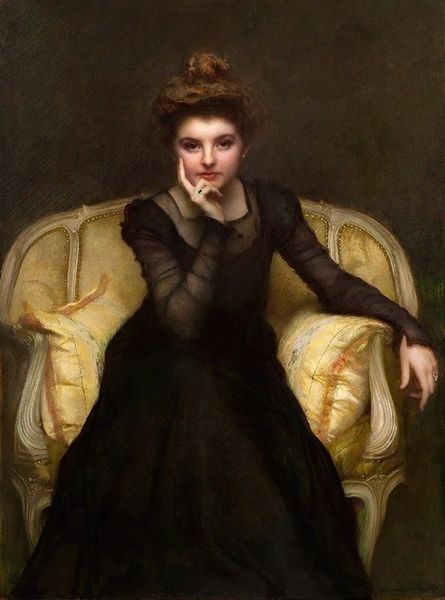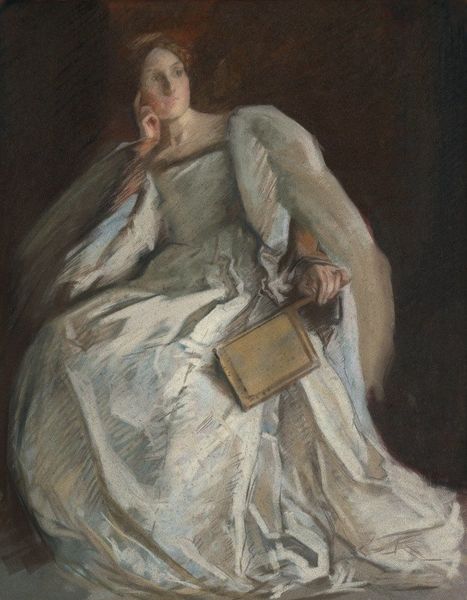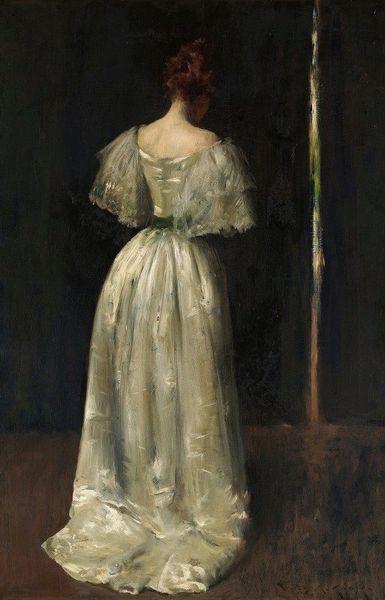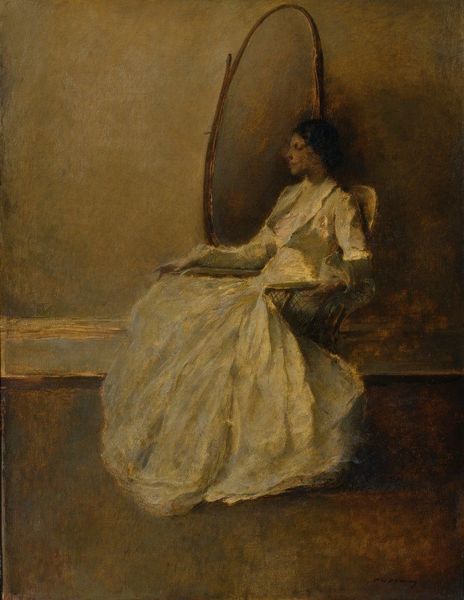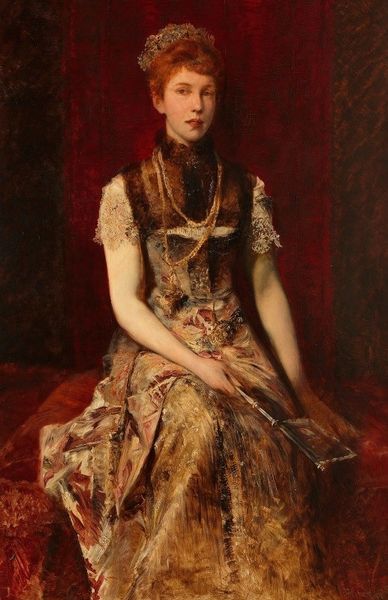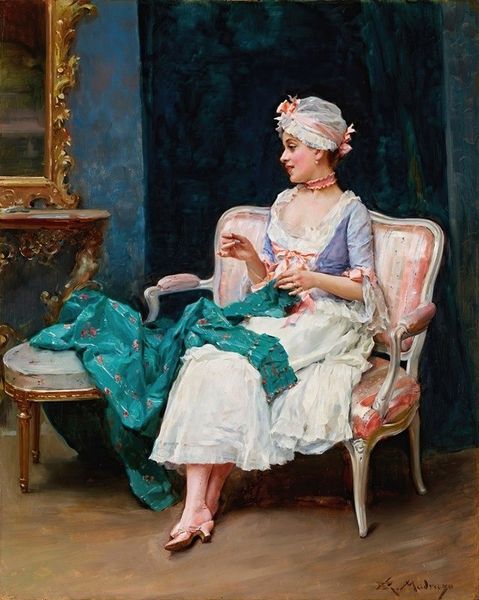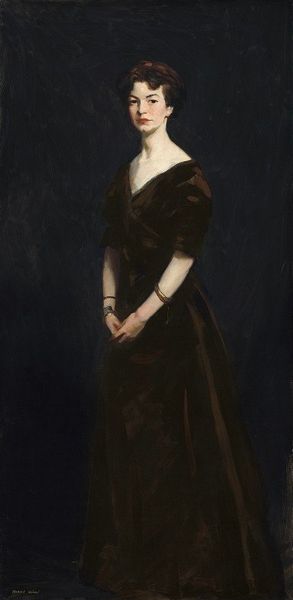
Copyright: Public Domain: Artvee
Curator: What strikes me immediately about this portrait is its serenity. There’s such a quiet elegance to the composition. Editor: And to me, a feeling of privilege exudes from it. This is John White Alexander's portrait of Miss Dorothy Quincy Roosevelt, painted between 1901 and 1902. It captures more than just a likeness; it reveals something about social class and the artist's approach to portraying it. Curator: Yes, Alexander was quite sought after for his society portraits. He wasn’t just capturing faces; he was reinforcing a certain social order. You can see it in the deliberate pose, the flowing white dress, and even in the presence of what appears to be a purebred dog. The way the dress pools at her feet... it's symbolic. Editor: The color palette certainly contributes. The subdued background throws the white dress into sharp relief, while the dog, almost like an afterthought at the bottom of the frame, gives a warmth to the picture. The pose emphasizes her status. Notice how the lighting illuminates her face, drawing our attention to her composed expression. But there's something melancholic, too, isn't there? Curator: It’s a controlled melancholy, carefully constructed. Alexander uses a limited palette, which contributes to the overall sense of refinement, almost detachment. It is like viewing something beautiful from a distance. Think about how this portrait operates in the context of its time. It presents a particular image of women of that class—beautiful, ethereal, yet also confined by social expectations. The role of women within a political dynasty like the Roosevelts... Editor: Exactly! And the dress isn't simply a dress. It's a marker of wealth and status. But does the artist ever question that status? Is there a critical lens applied, or is it purely celebratory? It’s also tempting to view this portrait through a feminist lens, questioning what it meant to be a woman in that era. The dog seems much more comfortable and relaxed! Curator: Perhaps the point is that it captures a specific cultural moment, not a timeless truth. By accepting it as such, we gain insights into the era’s values and aesthetics. Editor: Ultimately, this painting serves as a valuable mirror reflecting the complexities and contradictions of its time. It shows a perspective that art gave us.
Comments
No comments
Be the first to comment and join the conversation on the ultimate creative platform.
